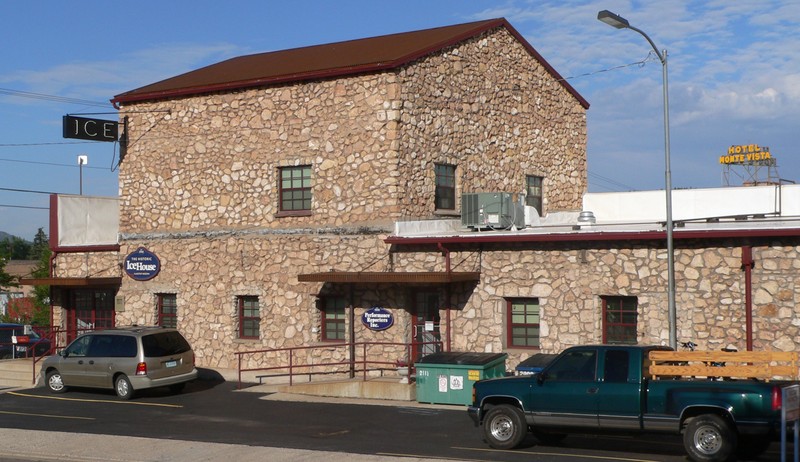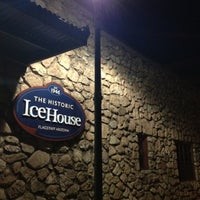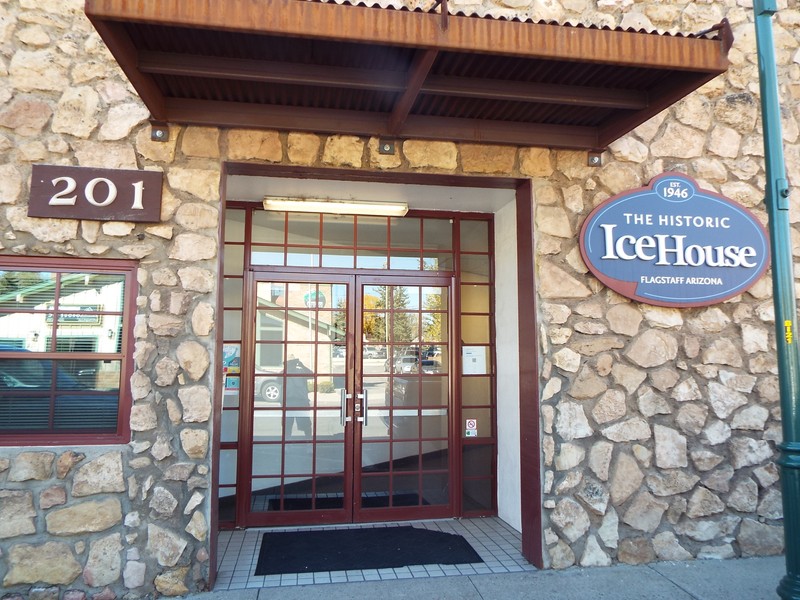The Ice House
Introduction
Text-to-speech Audio
Images



Backstory and Context
Text-to-speech Audio
The Ice House is significant because of its role in contributing to early commercial growth in Flagstaff, Arizona. The Ice House was the first commercial building constructed in Flagstaff after World War II, and the largest of its kind after the post office was built ten years previously. It was a groundbreaking achievement for the Babbitt Brothers who were beginning to make their mark on Flagstaff’s economy, and quickly vaulted them into the prominent ranks of local developers. The Ice House’s primary operations revolved around ice manufacturing, storage, and sales. It became an important stopping point for trucks transporting goods across Route 66 and for trains passing through town. Truckers and train engineers would stop to load their trucks or railcars with ice before continuing their trips across eastern Arizona or across the hot desert of western Arizona and southern California. In this sense, the Ice House served as a regional hub for ice-related services. The Ice House was important locally as it helped guide Flagstaff’s commercial development and it also impacted interstate commerce.
Archeological evidence suggests that people inhabited the region in and around present-day Flagstaff, Arizona thousands of years ago, but itself dates to 1881 when it was officially named. In the mid-1800s, ranchers looking for places to set up ranches and homesteads settled around the San Francisco Peaks – the mountain range that Flagstaff is nestled beneath. As the railroad and lumber industries grew during that time, so did Flagstaff. What started as a construction camp quickly turned into a bustling community of hard laborers and lumbermen. By 1910, Flagstaff had the reputation of being a lumber town, harvesting trees from the vast ponderosa pine forest surrounding the budding town.
The Babbitt Brothers, five in total, were among the new breed of businessmen arriving in Flagstaff in the late 1800s and early 1900s. They immediately carved out a niche for themselves first in the ranching industry and then in retail merchandising. They firmly established a name for themselves in the business sector, owning trading posts, a bank, a meat-packing plant, a mortuary, an auto dealership, and an ice plant (the Ice House). Several of the buildings the brothers had constructed are still in use today in downtown Flagstaff, one of the most notable being the Ice House.
World War II was a turning point for Flagstaff. It turned a small lumber and railroad community into a flourishing municipality. The war stimulated the local economy as many local companies and service industries were given a tremendous boost. The population in Flagstaff exploded in the late 1940s, and the sleepy mountain town emerged as a player on the national stage. Tourism was up, the lumber industry was still humming, home building increased, and new businesses were lining the streets. Downtown Flagstaff in particular was thriving, and new businesses were sprouting up in response to the town’s economic and population boom – the Ice House was among those businesses.
In 1902, David Babbitt, one of the prominent Babbitt Brothers who are considered by state and regional historians to be the principal economic founders of Flagstaff, in one of his diary entries asked himself the question: “Can we make ice?”. The answer was an empathetic “yes”, as two years later the Babbitt Brothers Trading Company built an ice storage warehouse in downtown Flagstaff. With visions of producing ice on a more grandiose scale, the Babbitt Brothers razed the original ice warehouse in 1931 and operated an ice manufacturing plant in a nearby location. The output of ice at this manufacturing facility drastically rose from five-hundred-seventy-two tons in of ice in 1941 to one-thousand-six-hundred tons in 1946. The Babbitt Brothers quickly realized that the supply of ice could not keep up with the burgeoning demand. In response, they began construction on the Babbitt Ice Plant, better known as the Ice House, to ensure that regional demand for ice would be met. Even more, the Brothers wanted to establish a regional hub that included the Flagstaff, Williams, and Grand Canyon vicinities, and to take a “chip” out of the ice-making market.
The Ice House was completed in the summer of 1947and had three times the freezing capacity, and five times the storage capacity (five-hundred tons), of the first ice storage warehouse operated by the Babbitt Brothers. The immense structure served two main functions: ice manufacturing/storage and ice sales. Also, the warehouse provided twenty-thousand square feet of floor space for groceries and roughly five-thousand cubic feet of cold storage.
Sources
The Ice House, National Register of Historic Places. Accessed January 4th 2021. https://catalog.archives.gov/id/75609788.
Category: Ice House (Flagstaff, Arizona), Wikimedia. Accessed January 22nd 2021. https://commons.wikimedia.org/wiki/Category:Ice_House_(Flagstaff,_Arizona).
